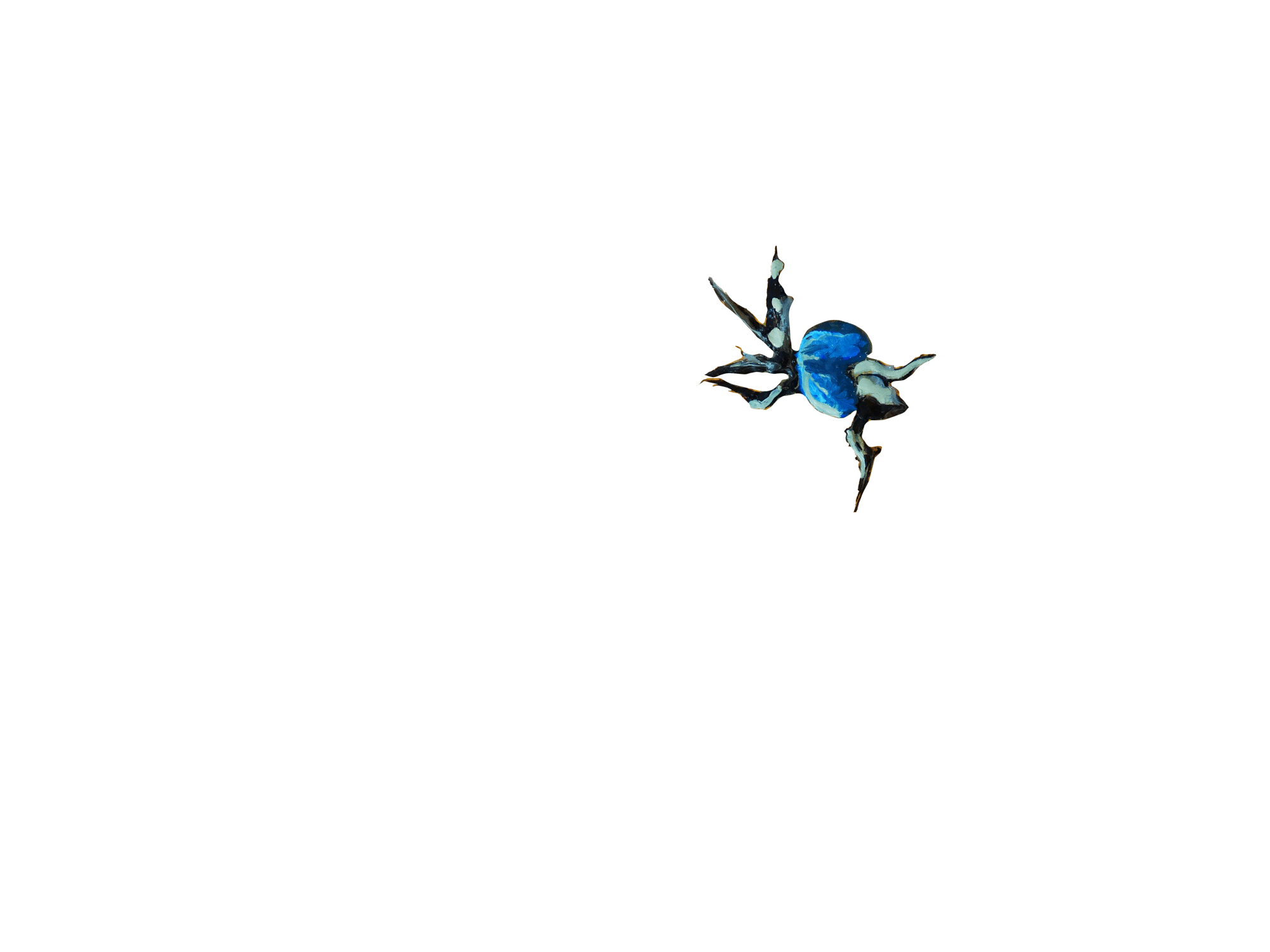SATURATION
PAINTINGS

INTERSTICE
These paintings have developed from my previous body of work Sterile Realism, they use saturation as a tool to create balance, tension, and attraction.
My teeth and gnat paintings both have texture, which I explain more here, on this page I am mostly explaining my exploration of context and negative space.
My series of eye paintings have been informed by this exploration of placement and the tension between objects.

Oil on Canvas

Oil on Canvas

Oil on Canvas
This larger Fungus Gnat painting is an expansion of my two smaller paintings I made last year. In this work, the interstitial space has increased vastly, thus provoking an intimate investigation from the viewer. The gnats measure no more than 4cm across at their largest. The forms are not as clear as my other works, expanding on my interest in viscerality from ambiguity, as discussed on my monoprint page and eye paintings.
TENSION




Focusing now on the saturated, unnatural backdrop to the subject matter in this series of work, the main intention in the bright colours is to create artificial sterility. It is this sterility that psychologists utilise to confront a patient's fear and develop new narratives and associations. By definition, psychological immersion is the experience of losing oneself amongst an artificial environment by shutting out cues from the physical world. It is conscious hypnosis of sorts, and this disconnection from a tangible reality is what I am trying to simulate when interacting with these paintings. The vast space and tension between subjects initiate a disassociation of the viewer, in which their eyes flow across the surface of the work.
CREATURE
SYMBIOSIS

Unlike much of my other work, the above teeth painting is one of two saturation paintings that utilise the presence of the human as the central focus. Not only do dentists strike fear in our very souls, but the fallen tooth indicates the failing body, internal decay, and the start of our descent back into the ground.
Here I will touch upon the symbiosis between arts and philosophy and arts and psychology. What initiates the beginning of a painting are the connotations of the subject matter, fish out of water, loss of teeth, infected eyes, they all provide literal connotations of fear death, and decay as well wider philosophical connotations that vary between viewers. The work is fluid and adapts to the viewer and the setting, the external context of the work is just as crucial to the immersive quality of the work as the internal context within the boundaries of the canvas.
STERILE


These three cockroach paintings are ongoing and play with the 3D aspects flowing over the edge of the panel onto the bright colour. The colour is emerging from underneath the paint, with the subjects perched on top.
The paintings take inspiration from iced cakes and the connection with cockroaches and food, playing the edible and inedible. These are more of a playful experimentation sitting alongside my other projects.
As mentioned with the teeth painting, this work portrays the presence of the human over and the connotations of the disconnected body. Although this work is less centred around psychological immersion, it uses the flow of brush strokes and saturation in the subject to desensitise the dismembered hands
The unspecific context of this work reduces the grotesque nature of the work, it is not bloody or rotten, it exists just out of the reach of the viewer, existing alongside them, away from fear.

Susan Stewart considers the collection to be seeking "...a form of self-enclosure..." within this collection, time runs adjacent to the external world, with the collection running at a rate of time in relation to its objects.
“The reduction in scale which the miniature presents skews time and space relations… This capacity of the miniature to create an ‘other’ time, a type of transcendent time which negates change and the flux of lived reality…”
- Susan Stewart
On Longing, 2005


Within my work, the collection runs both on a macro and micro scale. Internally, I have produced a micro landscape of subjects, scattered and miniature, it provokes a strategic confrontation in which the viewer is lured towards the canvas.
The change in time that Stewart describes is something that I have encountered when researching psychological immersion. Essentially, the viewer drowns out real-life cues in order to become fully transfixed by the confronting cues, in this case, the artwork. The immersive qualities of an object is increased vastly when the object is small, partially because creating the small requires a greater attention to detail and time to create, thus intriguing the viewer into inspecting the object further.
"The miniature world remains perfect and uncontaminated by the grotesque so long as its absolute boundaries are maintained."

As I have mentioned, a vast part of my practice is maintaining sterility whilst balancing 'grotesque' subject matter. Despite Stewart claiming that the miniature cannot contain the grotesque for perfection to exist, my work makes an attempt and balancing these two factors within an internalised sterile landscape.
The miniature is essential in adding tolerable characteristics to the subject matter of my choice as it scales down their shock and repulsion by introducing intimacy and closeness.
Further building on the idea of appeal and initiating interactions with the miniature, when an object appears small it implies that it is at a distance from the viewer, warped by perspective. The voyeuristic connotations of the miniature and the initmacy involved with that pushes the notion of strategic confrontation through scale further. Given the manipulation of size through distance, the viewer is more likely ot interact with the work because the feel distanced but also powerful of the insignificant size of the work.
This lack of intimidation propogated by the scale and painterly style, as discussed here, allows for a discourse of internalised discussion and discovery to occur, self reflection through the visualsation of fear and anxieties.


